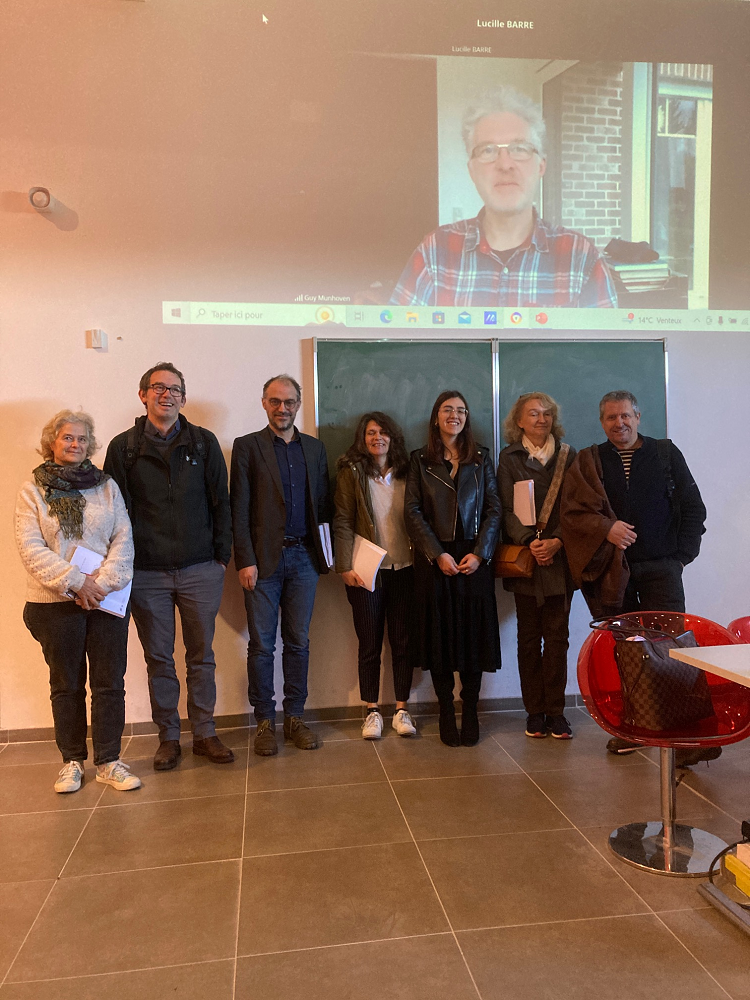On the following subject: "Impacts of environmental variability on the functional biodiversity of mixotrophic plankton and the carbonate system. Consequences on carbon flows in the Bay of Marseille. Coupled physical-biogeochemical modelling approach".

Location Institut Méditerranéen d'Océanologie - MIO Campus Technologique et Scientifique de Luminy 163 avenue de Luminy - Bâtiment Méditerranée13288 MARSEILLE cedex 09 13288 Marseille
Room: Océanomed Amphitheatre
Composition of the proposed jury :
Ms Christel PINAZO Mediterranean Institute of Oceanology (M.I.O) Thesis supervisor
Laurent BOPP LSCE-IPSL Rapporteur
Mrs Isabelle DADOU LEGOS Rapporteur
Ms France VAN-WAMBEKE Institut Méditerranéen d'Océanologie (M.I.O) Examiner
Mr Thierry MOUTIN Institut Méditerranéen d'Océanologie (M.I.O) Chairman
Mr Guy MUNHOVEN LPAP - Université de Liège Examiner
Mr Thibaut WAGENER Mediterranean Institute of Oceanology (M.I.O) Guest
Abstract :
The Bay of Marseille is a complex Mediterranean coastal environment, subject to numerous external inputs (Rhone, urban rivers, urban discharges, etc.) and affected by various hydrodynamic processes (intrusion of diluted water from the Rhone, upwellings, intrusion of the North Current, etc.). The result is a complex biogeochemical system. In this thesis, this complexity is addressed using biogeochemical modelling. In particular, this work aims to improve (i) our understanding of the conditions under which mixotrophic plankton emerge and (ii) our understanding of the variability of variables representative of the carbonate system in this dynamic environment. Eco3M_MIX-CarbOx made it possible to carry out a detailed 0D study of the dynamics of mixotrophic organisms and their impact on the structuring and functioning of the ecosystem in the Bay of Marseille. The dynamics of mixotrophic organisms is mainly affected by changes in nutrient concentrations in the area. Mixotrophy enables organisms that are capable of it to be more competitive than strictregime organisms when the resource becomes limiting. The inclusion of mixotrophs in the model is also associated with a change in carbon flows. In particular, mixotrophs increase the transfer of carbon to the highest trophic levels by 9 % and double the net community production (NCP) of the environment. The dynamics of carbonate system variables, air-sea CO2 fluxes and NCP were studied with Eco3M-CarbOx in 3D, over a five-year period (early 2017 to late 2021). The study showed that, overall, the Bay of Marseilles acted as a CO2 sink over the period in question. During an intrusion of dilute water from the Rhône, the input of TA, DIC and nutrients into the bay during the winter period led to a reduction in the CO2 sink and a strong dominance of heterotrophic processes. In contrast, summer upwelling episodes lead to a reversal in the flow of CO2 (from source to sink), mainly due to the drop in temperature that accompanies these events. The trophic status of the bay is also modified, with an increase in autotrophic processes. This thesis work underlines the importance of considering mixotrophic organisms in biogeochemical models and highlights the complexity of the dynamics of the carbonate system in the Bay of Marseille.
Keywords :
Mixotrophy, Carbonate system, Marseille Bay, Modelling, Carbon flux,




